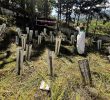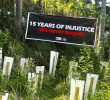What is Operation Phoenix? How can an almost-40-year-old counterrevolutionary program mounted on foreign shores provide relevant insights in explaining the current murderous spree in the Philippines?
By Joel Garduce
Ibon Features
MANILA — Splashed all over media, the commission appointed by President Gloria Macapagal-Arroyo to look into the current spate of extrajudicial killings began its hearings this September.
Headed by former Supreme Court Justice Jose Melo, the body was purportedly tasked to look into the rash of political killings of farmer activists, union leaders, student leaders, party-list organizers, professionals, church people and journalists that had made the Philippines look more like the killing fields for nameless assailants who lately did their bloody fare riding on motorcycles.
Human rights group Karapatan (Alliance for the Advancement of People�s Rights) reported that since Arroyo exploited EDSA 2 and assumed the seat in Malacanang in 2001, 752 Filipino citizens from all across the country have been waylaid extrajudicially. The impunity with which these killings were done have outraged justice and peace advocates both in and out of the country, including American bishops, members of the diplomatic community from European countries, the Committee to Protect Journalists, and Amnesty International.
The Melo commission�s conduct so soon after it began hearings, however, seemed to serve as the Arroyo regime�s tokenism on this matter to appease international concerns over the human rights violations in the country. Through its own actions, the Melo Commission has confirmed the worst fears of authentic advocates for justice and peace: it may as well be paving the way for the extrajudicial killings to continue unabated.
Given the failure, this early on, of the Melo Commission to truly probe the killings, it remains urgent for peace advocates to continue pushing for an independent, no-holds-barred inquiry into the killings.
Among the substantive points an independent, genuine inquiry ought to take, various political observers have noted, way before the Arroyo-directed inquiry began, is the apparent resemblance of the current spate of killings to a Vietnam War-era US military operation codenamed Operation Phoenix.
What is Operation Phoenix? How can an almost-40-year-old counterrevolutionary program mounted on foreign shores provide relevant insights in explaining the current murderous spree in the Philippines?
Past forward: Phoenix
Operation Phoenix was an infamous US covert action plan unleashed on the Vietnamese people during the Vietnam War in the 1960s. It was devised by no less than �the (US) President�s man in Vietnam,� Robert �Blowtorch� W. Komer of the US Central Intelligence Agency (CIA) in 1967, shortly after being appointed special assistant for pacification by then US President Lyndon B. Johnson in February 1966.
Promoted by Komer�s Civil Operations and Rural Development Support (CORDS) organization, Phoenix, Phuong Hoang in Vietnamese, evolved from the existing Special Platoons set up in Quang Nai Province in 1965. It was originally named the Intelligence Coordination and Exploitation Program (ICEX) when launched in 1967, utilizing South Vietnamese as well as US CIA resources.
The intent was to make the overall US counterrevolutionary effort in Vietnam more efficient. All intelligence activities and covert operations in the South Vietnamese countryside were coordinated to enable provincial security committees�which included paramilitary Provincial Reconnaissance Units (PRUs) helmed by CIA province officers�to identify and arrest what the US labeled as agents of the Vietnamese communists or Viet Cong.
Among the hundreds of Americans directly involved in Phoenix�as much as 650 officially remained by January 1969�many� were to be legendary CIA covert action operatives who cut their teeth in the program, among them William Colby, Theodore Shackley, Evan Parker Jr., John Mason, and John Tilton.
As ugly as it could get
In concrete terms, Phoenix was a terror and assassination program that was as ugly as it could get. In the US-directed drive to quantify success against the Vietnamese people�s national liberation movement, Phoenix instituted a macabre monthly quota system that rewarded human kills as the covert program�s prime success indicators.
Indeed, a US officer would lament on this �mania of the body count� propelling Phoenix. Operatives found it a �matter of expediency just to eliminate a person in the field rather than deal with the paperwork.� An �awful lot of vendettas (were) carried out with Phoenix license� where covert operatives�which included ex-convicts, corrupt police and military officials, and other mercenaries attracted to the CIA money��assassinated a lot of the wrong damn people.�
Colby, Komer�s successor in handling Phoenix who would later become CIA director, boasted in an official 1971 US hearing that the clandestine operation had killed more than 20,000 Vietnamese, mostly unarmed peasant civilians�and eliminated through other means 45,000 more�from� what the US establishment conveniently called the Viet Cong Infrastructure (VCI).
What was targeted as VCI, however, actually consisted of non-military democratic and patriotic organizations of Vietnamese at the grassroots.
It got worse; no less than 6,300 more would be killed and 30,000 more �neutralized� under Phoenix after Colby�s testimony. Until now, no justice remains forthcoming for the multitude of Phoenix�s Vietnamese victims.
Clearly, Phoenix�s chest-deep gore flouted international humanitarian law like the fundamental Geneva Conventions of War. Against the backdrop of rampant trafficking of heroin and other illegal narcotics by the US covert action establishment, the US� use of horrific biochemical weapons as Agent Orange, the rampant corruption of both the US and puppet South Vietnamese governments, the illegal expansion of the Vietnam War to neighboring Laos and Cambodia, and the severe demoralization among US soldiers that led to widespread killings of middle-level US military officers called �fraggings�, Phoenix loomed as the centerpiece terrorist act in the desperate US-directed criminal war of genocide against the Vietnamese people.
Foil for US gore and mayhem to come
In the Phoenix terror, the US saw the shape of gore and mayhem to come. In the twisted mindset of the US military establishment, Phoenix did right and well. It thus became the foil for future US-directed so-called counter-insurgency schemes against national liberation movements elsewhere in Asia and Latin America. Military operation plans supervised by the US military in its neocolonies thereafter would systematically include as a key component Phoenix�s �non-traditional� approach of recruiting, training and unleashing death squads to prey on impoverished unarmed civilians residing in militarized countrysides. Thus did the spectre of Phoenix stalk the Philippines, Argentina, Colombia, El Salvador, Guatemala and other US-oppressed countries.
This infamous US covert program may well have been the forerunner of all the so-called counter-insurgency programs launched by the Philippine reactionary state since the Marcos dictatorship. The various Orwellian-labeled �oplans��from Marcos� �Katatagan� to Macapagal-Arroyo�s �Bantay-Laya��aimed to coordinate the state�s US-directed counterrevolutionary efforts for every administration, just like Phoenix sought to do.
As in Phoenix, all these Philippine oplans seem to have been laid down in tight coordination with the US military establishment, from the US-RP Mutual Defense Board during Marcos� heyday to the US-RP Defense Policy Board and the current US-RP Security Engagement Board, though the newly-formed security engagement board stands on shaky legal grounds as the agreement that formed it has not gone through the constitutionally-mandated approval of both the US and Philippine Senates.
Phoenix imprint on the current spate of killings
Phoenix�s dark shadow seems to cast long as well over the current spate of illegal killings. As the US dogmatically regarded the independent democratic and patriotic organizations of the Vietnamese at the grassroots as part of the Vietcong infrastructure (VCI), so does Macapagal-Arroyo�s Oplan Bantay Laya generals blindly take the Phoenix tack and criminally regard the historically unprecedented growth of democratic organizing specially at the grassroots countryside in the country as part of the �infrastructure� of the Communist Party of the Philippines-New People�s Army-National Democratic Front (CPP-NDF-NPA).
Arroyo�s military henchmen appear to have bared their undemocratic Phoenix indoctrination and taken the lead in libelously labeling the leading people�s organizations in the Philippines today as mere CPP �fronts� as gleaned from the infamous �Knowing the Enemy� AFP Powerpoint presentation and the book �Trinity of War� written by a Macapagal-Arroyo general.
The regularity of the extrajudicial killings of late may also well point to a Phoenix imprint: a demented military quota system of illegal bloodletting could be underlying this spree of gore. The masterminds and implementers of these covert actions appear to robotically fulfill their death quotas, unmindful and undeterred by growing democratic outrage both here and abroad.
Even the region-by-region local setup of Phoenix may have been mimicked by the authors of the killings. This can be gleaned by the telling case of the August 3, 2006 assassination in Daraga, Albay province of United Methodist Church pastor Isaias Sta. Rosa, a member of a local farmers� group identified with the leading national peasant organization Kilusang Magbubukid ng Pilipinas (Peasant Movement of the Philippines).
Isaias� death would have looked so similar to the other killings. Except for one small detail. He was found dead with another dead man bearing gunshot wounds lying beside him.
The other dead body turns out to be that of Cpl. Lordger Pastrana of the Philippine Army. Isaias� wife later pointed out to him as one of his husband�s abductors. Despite her husband�s armed abductors being masked, Isaias� wife was able to identify Pastrana from his build. All these confirmed the belief of Jonathan Isaias, the pastor activist�s brother and witness to his abduction, that Isaias� abductors were from the military, because of their bearing, the fatigues they were wearing, the high-powered firearms they carried and their combat boots. Two previous occasions saw men in similar military uniform, with nameplates hidden from view, searching his brother�s house.
And where did Pastrana come from? The abandoned military man was apparently assigned to the Public Affairs Office of the 9th Infantry Division based in the military�s regional headquarters in Pili, Camarines Sur.
Command behind the covert actions
While likely having an organization spread across the regions, Oplan Bantay Laya�s (OBL) covert action command is centralized, ensconced at the heart of the regime�s power, Pres. Arroyo herself and her close partner committee, the Cabinet Oversight Committee on Internal Security (COC-IS), whose members are Executive Secretary and former AFP General Eduardo Ermita, National Security Adviser Norberto Gonzales, Justice Secretary Raul Gonzales, Defense Secretary Avelino Cruz and AFP Chief of Staff Gen. Hermogenes Esperon who recently replaced Gen. Generoso Senga, together with the US-RP Security Engagement Board.
As in Phoenix, Oplan Bantay Laya�s workings seem to ride roughshod over both local and international human rights standards specially those relating to the conduct of war. Such barbaric treatment of unarmed civilians in the hands of government security forces flagrantly violate international legal instruments gained from the global anti-fascist struggle during World War II as the Geneva Conventions. More tellingly, the architects of this Phoenix-like terror seem intent on copying Vietnam War-era bloodshed to the point of nullifying the 1987 Constitution�s superior Bill of Rights as well as the Comprehensive Agreement on Human Rights and International Humanitarian Law (CAHRIHL), among the best things gained for peace and justice by the Filipino people.
Could it be that the Phoenix-like extrajudicial killings in our country serve some ugly politics? Similarities with Vietnam cannot be ignored, where killings may manifest an eerie desperation on the part of the ruling regime and its patron, the US. Such similarities demonstrate the path towards state deception and violence that should not have a place in a �democratic society�. Sadly, it is doubtful that the Arroyo-appointed Melo Commission�as seen by its concrete actions so early in its inquiry�will give the victims of extrajudicial killings the full, authentic justice they deserve. (Ibon Features)
References
�
��� * Beckett, Ian Frederick William, Encyclopedia of Guerilla Warfare. New York, NY:Checkmark Books, 2001.
��� * Corn, David, Blond Ghost: Ted Shackley and the CIA�s Crusades. New York, NY: Simon and Schuster, 1994.
��� * Helms, Richard, A Look Over My Shoulder: A Life in the Central Intelligence Agency. New York: Ballantine Books, 2003.
��� * Jeffreys-Jones, Rhodri, The CIA and American Democracy. New Haven: Yale University Press, 1989.
��� * Marchetti, Victor and John D. Marks, The CIA and the Cult of Intelligence. New York, NY: Dell Publishing Co., 1974.
��� * Ranelagh, John, The Agency: The Rise and Decline of the CIA. New York, NY: Simon and Schuster, 1986.
��� * �Partners in Terror�, Paninindigan, September 2006.
Extrajudicial Killings









